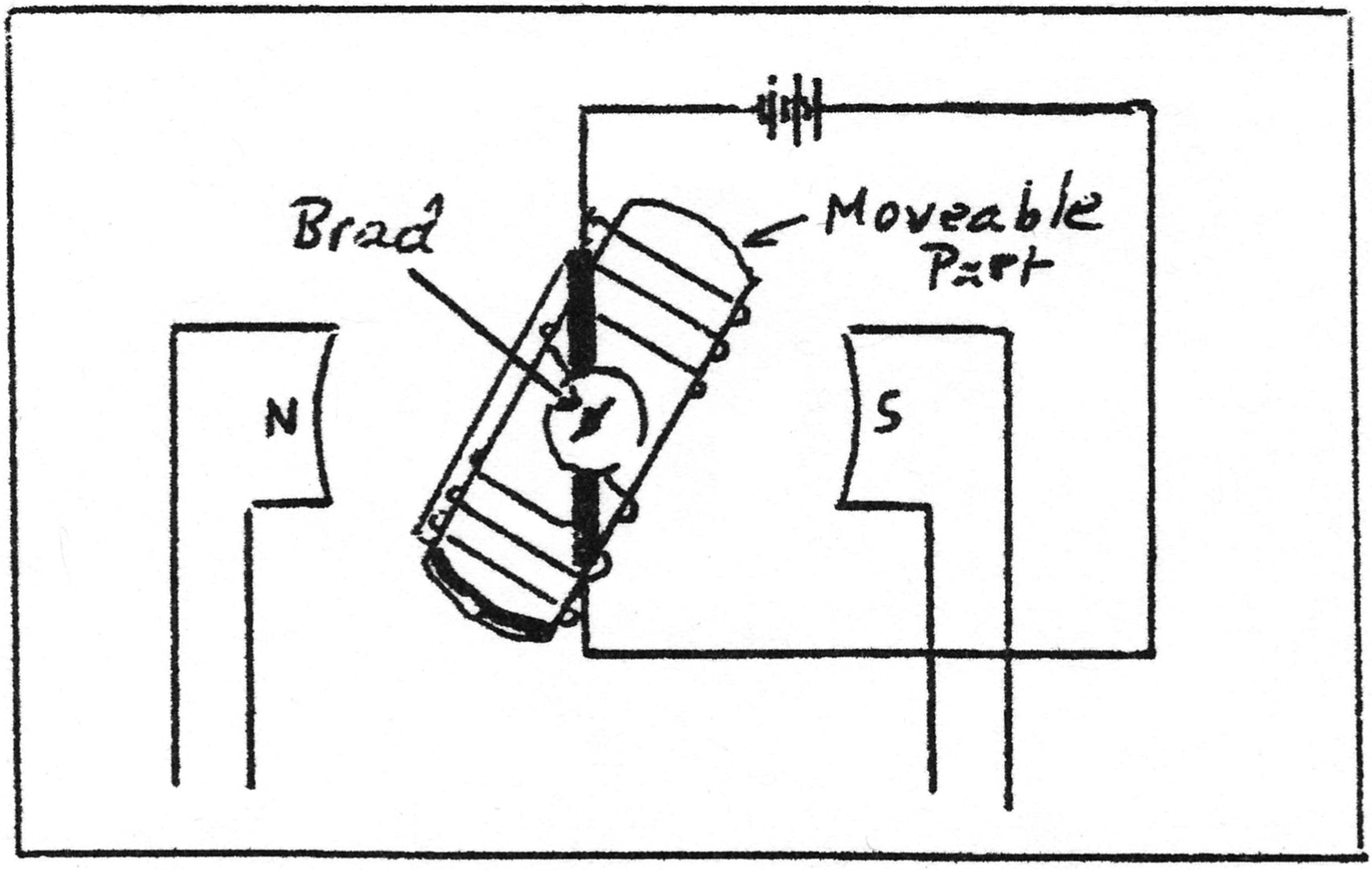The D.C. Motor
December 01, 1989 Filed in:
Demo CornerPeter Scovil, Waterford District High School
Introduction
Have you had difficulties explaining to students the complexities of the D.C. motor? Try simplifying the concept by using a turntable, such as from the old PSSC moment of inertia experiment set. It is large enough to fit two bar magnets end to end across it. You then hold like poles of two other bar magnets at each end, letting the turntable rotate away. Opposite poles meet (Fig. 1). What must be done to keep the rotation going? Students give some very interesting suggestions. These can be tested right away. The need for continually alternating poles can then be shown to be the best solution. The obvious problem of worn-out wrists from switching the poles leads the class directly into the need for commutators and brushes.

 Figure 1: Turntable motor
Figure 1: Turntable motor
�Overhead Projection Model
Once the students have the introductory idea, you can show them the details of operation using an overhead projection model like the one illustrated (Fig. 2). The armature coil is mounted using a brad so that it is free to rotate. One end of it is marked. Once the class is familiar with the main parts, place a blank acetate over the armature, and draw in the direction of electron flow from the dry cells, through the brush, onto the commutator, and round the coil. The students can easily predict the polarity and rotation. You can move the armature accordingly. Each step can be shown, drawing in electron flow for each armature position on a new acetate sheet.
The first time through, try to line up the armature to match the diagrams in the current text. (Ed. question -- pun intended?) However, it is easy to change the initial conditions and see if the students can predict the rotation. You can make a similar overhead model for the A.C. generator.

 Figure 2: Overhead Model of D.C. Motor
Figure 2: Overhead Model of D.C. Motor
Column Editor: Ernie McFarland, Physics Department, University of Guelph, Guelph, Ontario, N1G 2W1 Tags: Electricity, Magnetism



